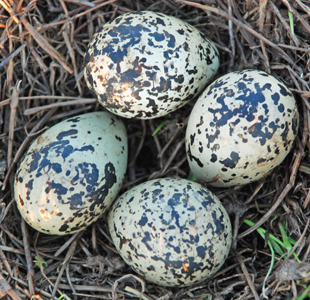Pied stilts (Himantopus himantopus leucocephalus) or black-winged stilts as they are also known, are a common native to New Zealand and are also found in Australia, Indonesia, the Philippines, and the Bismarck Archipelago.
 Pied stilts are found throughout the world and the classification of these birds can be controversial as they differ from place to place. Some believe that there are as many as five separate species while others consider them to be subspecies. Whatever the case may be the pied stilts found here Himantopus himantopus leucocephalus or poaka as the Maori know these beautiful birds are classified by an all-white head, neck white, black behind, open black chest band and usually a white band across upper back.
Pied stilts are found throughout the world and the classification of these birds can be controversial as they differ from place to place. Some believe that there are as many as five separate species while others consider them to be subspecies. Whatever the case may be the pied stilts found here Himantopus himantopus leucocephalus or poaka as the Maori know these beautiful birds are classified by an all-white head, neck white, black behind, open black chest band and usually a white band across upper back.
Pied stilts are found in a variety of habitats such as sheltered marine harbours, wetlands, estuaries, lagoons, riverbeds, waterlogged pastures and lakesides where they use their extremely long and lanky legs (which give them their name) to wade through the water in search of small insects, marine molluscs, worms and crustaceans which are probed out of the sand or mud. In winter many of the birds that breed on Canterbury's rivers migrate to the warmer North Island harbours to feed.
 Pied stilts are found throughout the world and the classification of these birds can be controversial as they differ from place to place. Some believe that there are as many as five separate species while others consider them to be subspecies. Whatever the case may be the pied stilts found here Himantopus himantopus leucocephalus or poaka as the Maori know these beautiful birds are classified by an all-white head, neck white, black behind, open black chest band and usually a white band across upper back.
Pied stilts are found throughout the world and the classification of these birds can be controversial as they differ from place to place. Some believe that there are as many as five separate species while others consider them to be subspecies. Whatever the case may be the pied stilts found here Himantopus himantopus leucocephalus or poaka as the Maori know these beautiful birds are classified by an all-white head, neck white, black behind, open black chest band and usually a white band across upper back.Pied stilts are found in a variety of habitats such as sheltered marine harbours, wetlands, estuaries, lagoons, riverbeds, waterlogged pastures and lakesides where they use their extremely long and lanky legs (which give them their name) to wade through the water in search of small insects, marine molluscs, worms and crustaceans which are probed out of the sand or mud. In winter many of the birds that breed on Canterbury's rivers migrate to the warmer North Island harbours to feed.
Breeding and nesting can occur as early as July in the northern part of the country and can continue into summer. Nests are usually built on the edge of wetlands/lagoons or above the high-tide mark on sandy beaches and riverbeds. The stilts are very vocal at this time of year and if an intruder ventures too close to their nest or young they make sharp yapping calls and often feign a broken wing in order to draw attention away from their exposed nest or young. The female usually lays four eggs which are incubated by both parents. Incubation usually lasts for 25 days. The chicks usually leave the nest the same day after hatching and are covered with a soft down with speckled yellow-brown upper-parts and white under-parts. When danger threatens they drop straight to the the ground and remain motionless becoming extremely difficult to detect.

Above: A young stilt finds its legs on the estuary mud
Right: A pied stilt incubates it's eggs in waterlogged pasture.
Left: A newly hatched chick sits on its nest, stilt chicks usually leave the nest the same day.
Below: A newly hatched chick soaks up some rays, a relief after being cramped in the egg for 25 days :)






No comments:
Post a Comment